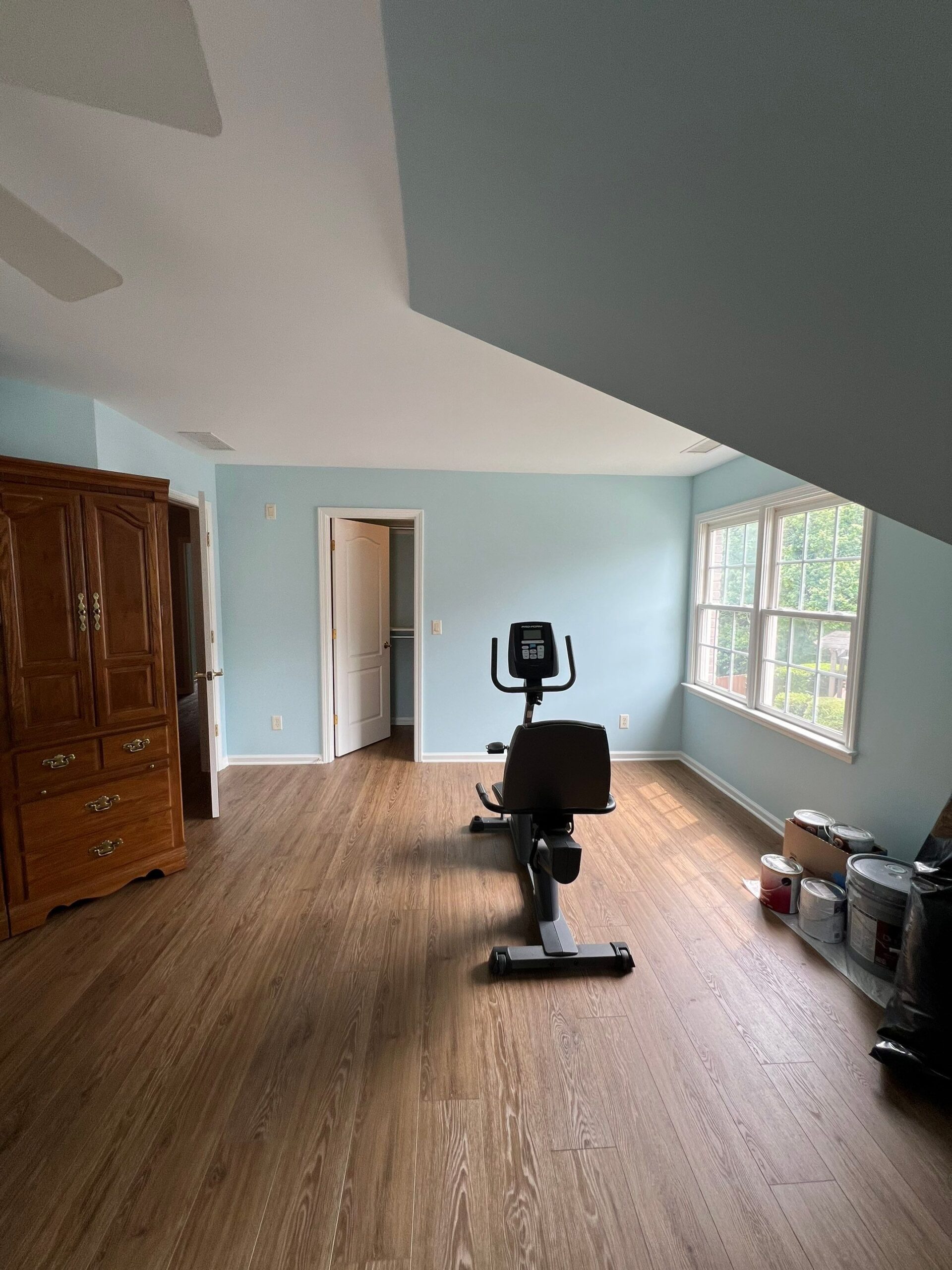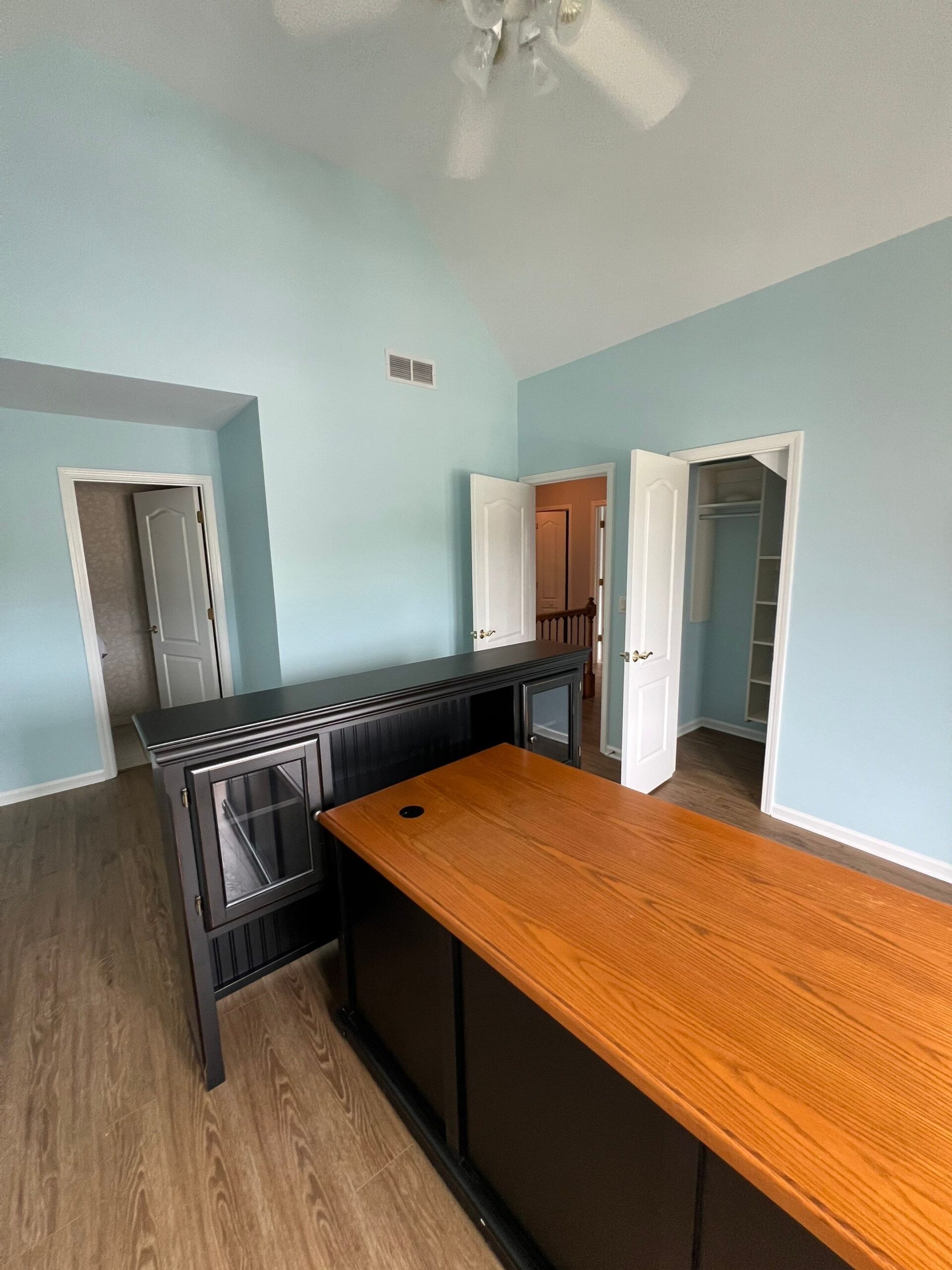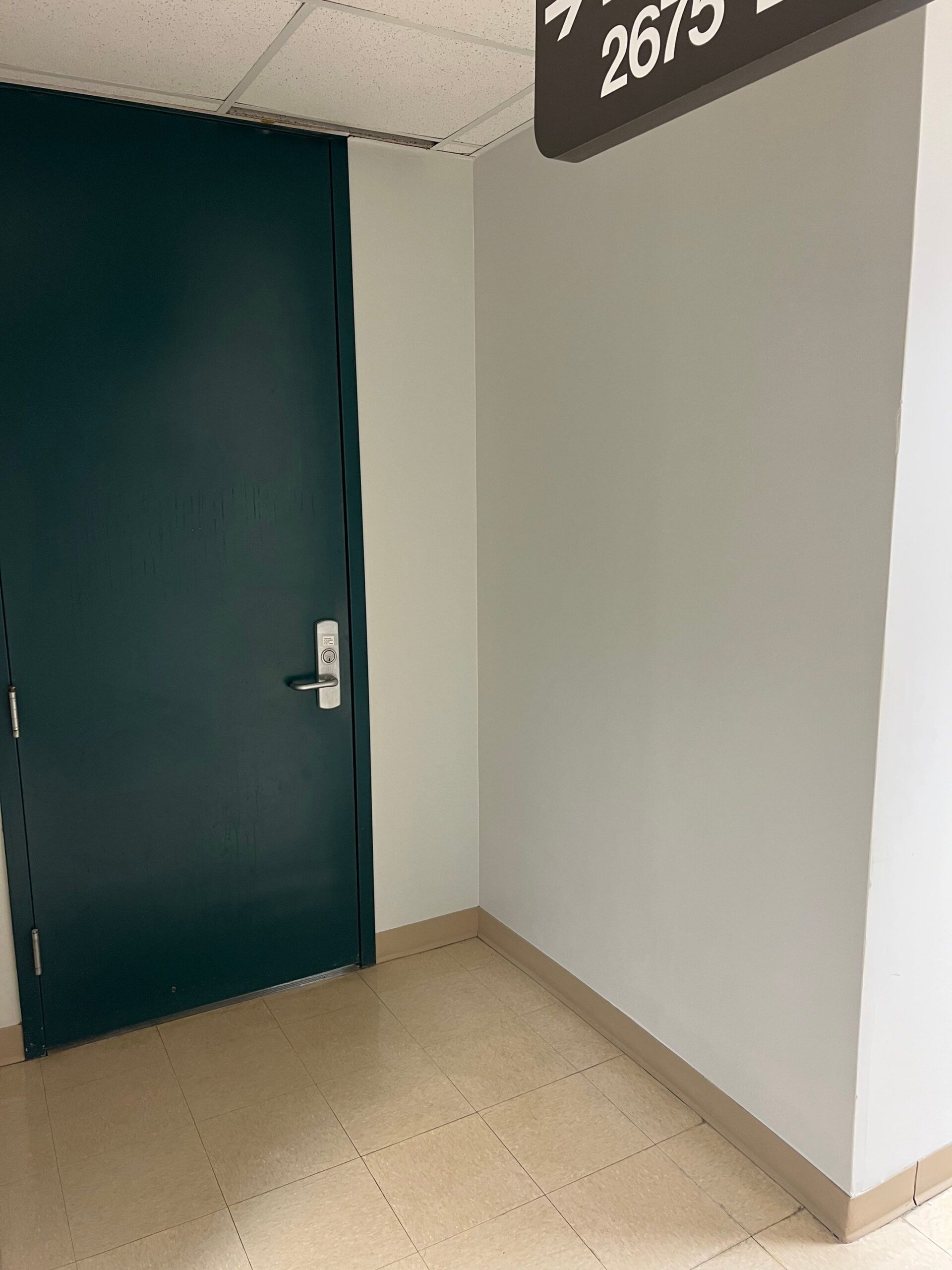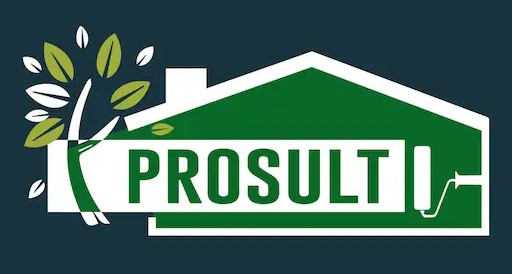Every homeowner or property manager eventually asks the same question before a project starts:
“How many coats of paint do I really need?”
Here’s the honest truth from professional painters at Oakcliff Painting:
In most cases, two coats of paint are essential for a smooth, durable, and long-lasting finish. But the exact number depends on factors like the surface type, the quality of the paint, color contrast, and application method.
The right number of coats of paint affects much more than appearance—it impacts protection, lifespan, and even maintenance costs. Skipping a coat can cause early fading, uneven color, and peeling, all of which shorten the paint’s lifespan and increase long-term costs.
Key Takeaways
-
Two coats of paint deliver even coverage and long-lasting protection.
-
Bare drywall, bold color changes, or textured surfaces usually require primer + two finish coats.
-
Premium paints reduce, but don’t remove, the need for multiple coats.
-
Proper prep, drying time, and film thickness are as critical as the number of coats.
-
An additional coat can extend coating life by 3–5 years and significantly improve durability.
Why the Number of Coats of Paint Matters More Than You Think
Film Thickness and Protective Layering
Every modern paint system—from Sherwin-Williams Duration®, Benjamin Moore Aura®, to PPG Permanizer®—is engineered to perform best at a specific dry film thickness (DFT), usually around 3–4 mils.
A single coat of paint rarely achieves the necessary film build. Two coats typically provide the complete protective barrier needed against UV rays, moisture, and wear. When the film is too thin, you’ll notice early fading, chalking, or peeling—especially in humid or high-traffic environments.
Color Uniformity and Sheen Consistency
The first coat of paint mainly serves as a foundation—it fills pores and begins establishing color uniformity. The second coat, however, delivers depth, consistency, and true sheen. One coat might look fine when wet, but once dry, streaks, roller marks, or light spots often appear.
Long-Term Durability
Professional-grade finishes rely on layering. Each coat strengthens adhesion, enhances color stability, and boosts resistance to cleaning and abrasion. Experienced painters follow manufacturer specifications for spread rate, recoat timing, and drying conditions to ensure the coating cures properly and performs as intended.
How Surface Type Influences the Number of Coats of Paint
| Surface Type | Paint Behavior | Recommended Coats | Professional Insight |
|---|---|---|---|
| Bare drywall or plaster | Highly porous; absorbs paint unevenly | Primer + 2 finish coats | Prevents flashing and patchiness |
| Previously painted walls | Sealed surface with good adhesion | 2 finish coats | Ensures uniform sheen |
| Bare wood | Absorbs paint quickly | Primer + 2 finish coats | Prevents grain bleed-through |
| Stucco or masonry | Textured and porous | 2–3 coats | Increases weatherproofing and coverage |
| Metal surfaces | Prone to rust without primer | Primer + 2 finish coats | Protects against corrosion |
| Cabinets or trim | Detailed, high-touch areas | 2–3 thin coats | Enhances durability and smooth finish |
Each substrate behaves differently. For instance, drywall soaks up the first coat almost like a sponge, while metal needs a corrosion-resistant primer before finish coats. Professional painters at Oakcliff Painting inspect each surface before deciding how many coats of paint are necessary.
Not All Paints Cover the Same Way
The number of coats of paint depends greatly on paint formulation. High-end products like Sherwin-Williams Emerald®, Benjamin Moore Aura®, or Dunn-Edwards Everest® contain higher pigment volume concentrations (PVC), allowing better hide and color richness.
Budget paints, with fewer solids, may require an extra coat just to match the coverage and durability of premium lines. Even “paint and primer in one” products don’t eliminate the need for two finish coats—they simply improve bonding and save one prep step.
For example, Sherwin-Williams Duration® includes self-priming technology, but the brand’s data sheet still specifies two coats for full warranty coverage. A single coat fails to meet the film build needed for its tested performance.
The Impact of Color Choice on Coating Requirements
Light-over-Dark and Dark-over-Light
Painting a light color over a dark surface typically demands more coats of paint for full hide. A gray-tinted primer can reduce this need. Conversely, applying dark over light is easier, though two coats still ensure color saturation and sheen uniformity.
Bold or Deep Colors
Bright reds, oranges, and yellows use translucent organic pigments that don’t cover well. Even high-solids paints may need three or more coats to achieve color accuracy. Manufacturers like Benjamin Moore recommend tinted primers for these colors to minimize the number of finish coats.
White and Off-White Finishes
Whites reflect light and reveal every imperfection. Two uniform coats of paint ensure consistency and a smoother finish, especially under strong lighting.
Professional Standards and Process
Proper Surface Preparation
Even multiple coats of paint can fail without solid prep. Professionals clean, sand, and repair all surfaces before priming. For new drywall, a latex primer seals the surface and evens out porosity. For glossy or previously painted walls, a bonding primer ensures proper adhesion.
If the surface has damage or loose coating, pros may use hand scraping—a critical prep step explained in detail here. Proper cleaning and prep make every additional coat more effective.
Drying and Recoat Time
Latex paints generally require 2–4 hours between coats, while alkyd or oil-based products need up to 24 hours. Applying the second coat too early traps moisture, causing bubbling or dullness. Professionals at Oakcliff Painting always verify curing conditions before recoating.
Application Technique
Film thickness and coverage are affected by roller nap, sprayer tip size, and brush quality. Pros maintain a “wet edge” and use cross-roll techniques for even distribution. They also measure spread rate (typically 350–450 sq. ft. per gallon per coat) to achieve consistent film build.
One Coat vs. Two Coats vs. Three Coats
| Coating System | Initial Cost | Durability (Years) | Appearance Quality | Long-Term Value |
|---|---|---|---|---|
| One Coat | Lowest | 2–3 years | Uneven, inconsistent | Poor |
| Two Coats | Moderate | 6–10 years | Uniform, vibrant | Excellent |
| Three Coats | Highest | 10–12 years | Rich, flawless | Best for high-traffic or commercial use |
While two coats increase upfront cost by 25–30%, the investment pays off in longevity. Over a decade, the total cost per year of service drops substantially—especially for interior applications where cleanliness and appearance matter most.
When a Third Coat May Be Needed
Certain conditions call for more than two coats of paint, including:
-
Extreme color transitions (e.g., red to white or navy to beige).
-
Highly textured substrates such as brick or stucco.
-
High-traffic areas like hallways, kitchens, or hospital interiors.
-
Eco-friendly low-VOC paints that require thicker build.
Professional painters evaluate each surface’s porosity, exposure, and color contrast before deciding whether two or three coats are appropriate.
How Professionals Decide the Right Number of Coats of Paint
Painters at Oakcliff Painting evaluate:
-
Surface condition – Is it new, previously painted, or repaired?
-
Paint type – Premium paints vs. economy-grade options.
-
Lighting conditions – Strong directional lighting can reveal streaks.
-
Project goals – Aesthetic vs. protective finishes.
-
Warranty requirements – Most manufacturers require two coats of paint for full warranty coverage.
Each project in Sandy Springs, GA is assessed with these standards to ensure consistent coverage and lasting beauty that meets ASTM and manufacturer specifications.
The Risks of Applying Too Few Coats
Uneven Color and Poor Coverage
Single coats often dry unevenly, exposing roller marks or patches. Under natural light, these defects become more visible, especially on smooth walls.
Premature Failure
Without adequate film build, moisture can seep in, leading to peeling and bubbling. This is especially common in high-humidity interiors or unprimed substrates.
Shortened Paint Lifespan
One coat may look fine initially but typically lasts half as long as a two-coat application.
Higher Long-Term Costs
Skipping a coat may save you 20% today—but you’ll likely pay double within a few years when early repainting becomes necessary.
FAQs: Common Questions About Paint Coats
Q1: Can one coat of paint ever be enough?
Sometimes, if the surface is uniform, you’re repainting the same color, and using a high-solids premium product. But even then, professionals prefer two coats for even sheen and long-term protection.
Q2: Do self-priming paints eliminate the need for two coats?
No. They save a step but don’t change how film builds. Two coats are still needed for full durability.
Q3: How do I know if my surface needs a primer?
Bare drywall, metal, and raw wood always need a primer before applying the first coat.
Q4: Will two coats make my color darker?
Not darker—truer. Two coats bring the paint to its intended shade and even out the reflectivity.
Q5: Can professional spraying reduce the need for a second coat?
Spraying improves evenness, but most applications still require two coats for optimal thickness and coverage.
Professional Recommendation—The Right Coating System for Your Property
For both residential and commercial interiors, primer + two finish coats remains the professional standard. This system ensures:
-
Complete adhesion and sealing.
-
Uniform sheen across all surfaces.
-
Extended resistance to wear, UV, and moisture.
Professionals tailor coating systems to each substrate—drywall, trim, or cabinetry—ensuring premium finishes for interior house painting projects.
Two Coats Protect Your Investment

The answer to “how many coats of paint do you need?” isn’t just a matter of looks—it’s a matter of performance. Two coats remain the gold standard because they provide even coverage, lasting durability, and better long-term value.
For homeowners and property managers in Sandy Springs, GA, trusting a professional like Oakcliff Painting ensures that your surfaces get exactly the number of coats of paint they need—never more, never less.
Whether you’re upgrading your office interior, refreshing a residential wall, or correcting mistakes painters make before exterior painting, proper preparation and multiple coats will always deliver the best results.
Schedule your professional interior house painting project with Oakcliff Painting in Sandy Springs, GA today and experience what a flawless, professionally applied coating system can do for your home or business.




